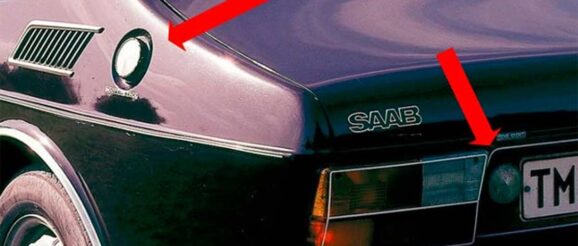Nostalgic Innovation: Saab 99 Petro – A Saab With a Soviet Twist

In the midst of the 1970s oil crisis, car manufacturers worldwide sought creative solutions to tackle the challenges posed by the energy crunch. Saab, the renowned Swedish automaker, was no exception, and an unusual yet innovative idea emerged from their Finnish factory to address the crisis. Enter the Saab 99 Petro, a special version of the popular Saab 99 GL that could be fueled not only with traditional gasoline but also with a rather unconventional alternative – Soviet kerosene!
Unveiling the Saab 99 Petro Edition
In 1977, at the Valmet factory in Nystad, Finland, a unique version of the Saab 99 GL was introduced – the Petro. This Finnish project, named Lapponia, aimed to create a Saab model that could operate on a variety of fuels, including kerosene. While many components were borrowed from the Saab 99 Turbo, the Petro edition lacked a turbocharger. Instead, the engineers focused on lowering the engine’s compression to accommodate the use of alternative fuels.
The Petro model featured a divided fuel tank – a smaller section for gasoline primarily used during cold starts and acceleration, and a larger compartment for kerosene, which was utilized during steady driving. The fuel tank’s kerosene cap was cleverly placed next to the license plate, making the car truly stand out from its traditional counterparts.
A Fuel-Flexible Driving Experience
To facilitate seamless fuel transitions, Saab equipped the Petro model with an “Extra” button, allowing drivers to activate gasoline operation for cold starts. The car’s fuel system operated automatically, but drivers could override it using a button located on the dashboard.
Additionally, a third P/N (Petrol/Naphtha) button displayed the fuel levels in both the gasoline and kerosene tanks, while the last button featured an economy lamp to help drivers optimize their fuel consumption.
The Appeal of Kerosene
You might wonder why anyone would opt for kerosene as a fuel for their Saab. The rationale behind this choice was simple – Finland had a steady supply of low-octane kerosene, thanks to a bilateral trade agreement with the Soviet Union. In those turbulent times of the 1970s oil crises, access to alternative fuels became crucial for nations grappling with economic uncertainty and oil supply disruptions.
According to the book “Finnish-Soviet Economic Relations” from 1983, Finland relied heavily on Soviet imports to meet its needs for various fuel oils, including kerosene. The Saab Petro offered Finnish drivers a unique opportunity to reduce their dependence on gasoline and experiment with alternative, more readily available fuels.
The Good, the Bad, and the Smelly
Motoring magazines of the era described the Saab 99 Petro as relatively economical, achieving a fuel consumption of around 7 liters per 100 kilometers. It also provided significant cost savings, with fuel expenses cut in half compared to traditional gasoline models. Long-distance drivers could even opt for kerosene instead of diesel, enjoying a more lively engine response, faster acceleration, better cold-start performance during winter, and lower noise levels.
However, not all was rosy with this fuel-flexible Saab. Operating on kerosene had its downsides, one of which was the rather peculiar odor it emitted. Petri Tyrkö of the Finnish Saab Club aptly described the smell as reminiscent of “an old boat.” If the engine was not tuned correctly or the driver handled the car unskillfully, a distinct and unpleasant smell would engulf the surroundings – not unlike the one encountered at international airports near jet-fuelled aircraft.
The Rise and Fall of the Petro
Between 1980 and 1984, a total of 3,756 Saab 99 Petro models and 2,385 Talbot Horizon vehicles equipped with the fuel-flexible system were produced for the Finnish market. At first, running the Petro version proved to be a cost-effective choice due to its exemption from certain taxes. However, as kerosene prices increased and the number of kerosene filling stations dwindled, the Petro’s allure gradually waned, leading to the eventual discontinuation of the project.
Despite its short-lived run and limited market success, the Saab 99 Petro remains a testament to Saab’s ingenuity during the 1970s energy crisis. In a time when electrification and alternative fuels were not yet widespread, Saab offered Finnish drivers a unique and adventurous journey on the roads less traveled.
As we reflect on this nostalgic innovation, it serves as a reminder that, even in challenging times, there are opportunities to embrace creativity and exploration, driving us toward more sustainable and resourceful solutions for the future. The Saab 99 Petro may have left the automotive scene, but its pioneering spirit lives on, reminding us that sometimes, the most extraordinary journeys begin with the simplest twists.
